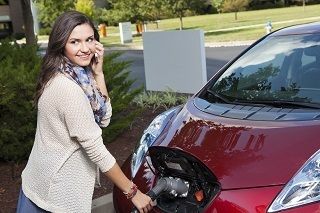Monitoring the Progress of Vehicle to Grid Is a Real Snooze

Guess what? Nothing has changed. And not to split hairs, but it’s not really important to the power utilities with the possible exception of the most progressive ones, e.g., San Diego Gas and Electric.
That’s why I bet the authors of this report are having a heck of a hard time selling it: V2G is seen as a non-event for the time being. People who understand the concept of market timing have their attention elsewhere.

Vehicle to grid will only become attractive when there are enough electric vehicles on the grid for aggregators of grid balancing services become involved. A company like Tesla might possibly look at this as they are already involved in stationary electricity storage.
These services will be in increasing demand as the proportion of intermittent renewable generation in the electricity market increases.
If they should get involved in the balancing services market – using distributed batteries to stabilise voltage on specific power lines, and grid frequency across the grid as a whole, then it would be logical to add the software to their vehicles – earning fees from the grid operators which could be used to offset part of the vehicle charging costs.
The first markets for these kind of technologies may well be places like Germany, Denmark, Australia, and Hawaii where the proportion of intermittent generation is high and increasing.
I go back to what I’ve been saying about the imperative to rethink how we regulate our utilities. I believe that, in the modern era, the concept of vehicle to grid has a huge potential to provide the ancillary services that utilities value so highly. But how do we get there from here? Only by making wholesale changes in how utilities are compensated for what they do.
When we created them 100 years ago, we told them that we wanted inexpensive and reliable power. Today, we’ve made quite a few adjustments in that request. In particular, we have thrown in the notion of clean energy, as well as the idea of energy efficiency, that is, we want you to sell us less electricity, rather than more.
In my opinion, all this necessitates a complete upheaval in the set of rules by which the utilities are governed. One of the new rules needs to be that providers of ancillary services that are so vital to grid stability are highly compensated according to their value. If we could accomplish this, it would cause a massive in-rush to things like V2G.
My point is that, in this new regulatory environment, vehicle to grid would be worth a great deal more than it has been in the past, which would provide everyone a huge incentive for making it happen.
Incidentally, I chose the picture for this post because the woman seemed so happy to be participating in all of this. She’d be even happier if you were compensated for making a portion of the energy stored in her batteries available to help grid operators perform their minute-to-minute tasks.